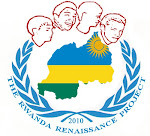“Just as it is clear that growth in the 19th and 20th centuries was driven by networks of railways and highways, growth and development in the 21st century is being defined and driven by digital highways and ICT-led value-added services” – Paul Kagame.
These words, pronounced by the just re-elected former president of Rwanda during the launch of his new NICI-2010 plan – a move towards an ICT (Information and Communication Technologies) and knowledge driven economy – prove at what point the government is determined to lead to the end its new Information and Communication Technologies policy. This revolution, expected to allow benefit from ICTs that level the global playing field and unlock human potential to accelerate socio-economic growth is aimed at making use of the most important and most abundant resource of
In order to succeed, several plans and measures have been put in place. Through these, the Rwandan Information and Technology Center (RITA) has been created and is driven by three priorities: the use of ICT to support national transformation and service delivery, the efficient use of high ICT resources and services and the promotion and integration of existing and emerging ICTs. As a tool of the Vision 2020 program, which aims to position Rwanda as a developed nation by 2020, several projects are born like community telecentres – set up to deepen the penetration of ICTs in rural areas – , the reinforcement of national cyber security – through building national capability – or the allocation of one laptop per child – through a specially developed 100$ computer –. Strong of more than 31 projects – and counting –, RITA’s initiatives are far from being left alone. Indeed, 16 years after the tragical events, the Kigali institute of science and technology (KIST), initially created to reassemble a strong post-genocide human resource database, reorientates its priorities in order to satisfy the striving needs in taking part in International Community activities such as trade, technological developments, transfer of technology and the promotion of scientific and technical know-how. The institute is very much focused on delivering highest international standards of academic programmes and providing world class fundamental, strategic and applied research to the community and businesses while remaining primarily responsive to the needs of Rwandans.
Moreover, the Rwandan ministry of health wants to benefit as well from the use of ICTs to provide and support healthcare delivery and become able to define architectures and standards for integrated and interoperable e-health systems that remain today only available in the richest countries of the world.
In the last five years, Rwanda has even launched its own – revolutionary (because of its Euro Pay, MasterCard and Visa compatibility) – and much awaited national electronic cards payment system. It has already reduced the over 40 billion RwF freely resting in the Rwandans’ pockets by 32% and is aimed at reducing it by 50% before 2015.
The same technologies that have transformed the way Americans live and work during the past 50 years have even now appeared in the country with the installation of a powerful 2500 km fiber optic network. The total cost of the operation, estimated in 2008 by the French consultancy firm: Scanbi Invest HB was of $81.8M, expected to deliver a l
evel of connectivity only recently rolled out in just a few places around the world with a coverage of 70 to 90% of the population. Today, the connectivity reaches high standards and the $1500 required in 2001 for a good internet connection has dropped to $50. The sector’s development attracts numerous foreign investors and a Corean firm even decided to invest $38M in national bandwidth.
In the same spirit, A-link Technologies – a Chinese firm – has set up a $500,000 phone assembling plant in
ear and added there are plans to establish a radio assembling plant as well. Moreover, he dismisses any worries of competition, openly saying: “The Rwandan market is limited. (…) We are thinking about entering other neighboring markets like Eastern Congo,
 There
There  are now three mobile phone providers in
are now three mobile phone providers in
Today, given the means invested in the different sectors, Rwanda seems well on-track to succeed in achieving its strong ambitions of becoming a knowledge-driven economy.
Arthur Draber



Aucun commentaire:
Enregistrer un commentaire
Leave your impressions !